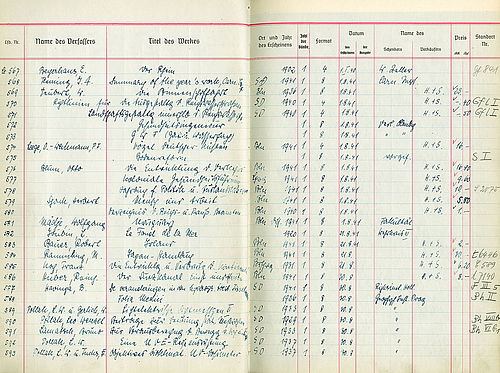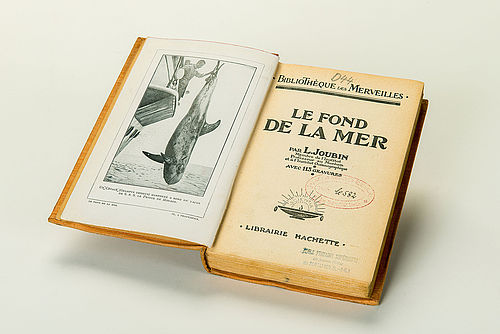Our objective
Persons persecuted by the Nazi regime during the National Socialist era were disenfranchised, robbed, tyrannized and murdered. Their property was confiscated or they were forced to sell it under duress. The most important task of provenance research is to search for such Nazi-looted property or, to be more precise, for all cultural assets seized as a result of Nazi persecution.
Motor vehicles under the loupe
In 2017, the Deutsches Technikmuseum commissioned the company Facts & Files to review its collection of historic motor vehicles. The aim was to find out whether any of the vehicles were seized from previous owners who had been persecuted as Jews during the National Socialist era. The origins of 92 of our vehicles could not be adequately determined. They have thus been entered into the public "LostArt" database so that descendants of the previous owners or concerned researchers can contact the museum.
How can provenance research at a technical museum be successful?

SDTB
A pilot project funded by the German Lost Art Foundation was initiated at the Deutsches Technikmuseum in 2019. The aim was to determine how provenance research can succeed when confronted with the special attributes of technical collections. For example, collectibles such as cars, radios or typewriters are usually produced in series and are therefore not unique pieces like paintings, which will often have ownership indicators such as labels and stamps that are rarely found on technical objects. Then again, manufacturers do tend to place serial numbers on their technical products and these can be compared with sales order books or shipping and receiving logs in order to find the first buyer.
The restitution files ("Wiedergutmachungsakten") in the Berlin State Archives are another important source of information. They list all applications for "reparations" by persecuted persons or their descendants after the Second World War. In isolated cases, the files can contain descriptions of stolen items such as vehicles, measuring instruments, typewriters and bicycles.
Lithographic Stones from the Paul Pittius Print Shop

SDTB/ Foto: C. Kirchner
One case involved six printing stones that were suspected of being cultural property confiscated as a result of Nazi persecution. After extensive research, the Deutsches Technikmuseum was able to track down the story of the brothers Julius and Martin Gerson. They were the owners of the "Paul Pittius Lithography Print Shop and Luxury Card Plant" in Berlin. However, as a result of their being persecuted by the National Socialists as Jews and political opponents, they were forced to sell their company. Both brothers were eventually apprehended and murdered.
With the help of family members, the museum was able to contact Miki Marcu, the granddaughter of Julius Gerson who lives in the USA. She consigned the printing stones to the museum on the condition that her grandfather and his brother would be memorialized in the museum in the future. In August 2023, a memorial stone for the Gerson brothers was inaugurated in the presence of family members. Visitors can now learn about these brothers and their company in the "Printing" exhibition or the online exhibition "Lithographic Stones Speak. The Story of the Gerson brothers and the Paul Pittius Print Shop". Demonstrations of the lithographic printing technique used by the Paul Pittius company are also regularly conducted in the museum.
Book from a French girls' school

SDTB/ Foto: C. Kirchner
In December 2021, the Deutsches Technikmuseum returned a book that was looted by German occupying troops in France during the Second World War. It was the museum's first repatriation. The object returned was the book "Le fond de la mer (The Seabed)" by French marine zoologist Louis Joubin, which describes the seas and their inhabitants and was published in 1920.
The provenance of the book could be determined by a stamp imprint on the title page. This led to the village of Pontlevoy in France. The book had been stolen from a girls' school that had previously existed in that small town near the city of Tours. Today, the "Lycée catholique de Pontlevoy" is located on the same site and its director received the book in the presence of the current pupils.
Long-term search for Nazi-looted property
The German Museum of Technology now has two permanent employees for provenance research. This ensures that the search for Nazi-looted property in the museum's own collection is also secured in the long term and independent of projects.


